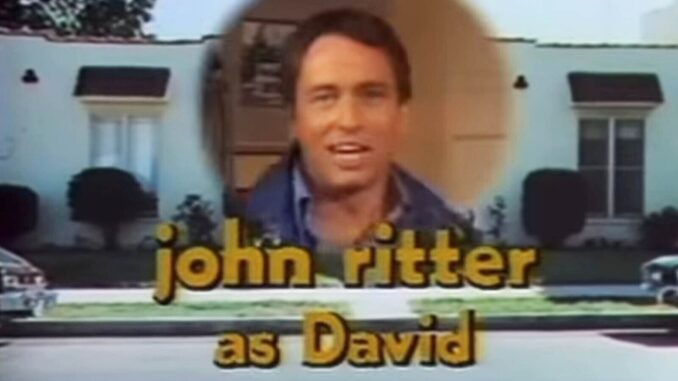
Imagine a world where Three’s Company wasn’t quite the same—where casting choices, character dynamics, and storylines diverged from the classic we all know and love. What if the iconic show, which defined late ’70s and early ’80s comedy, had an alternate version that never aired? Today, we dive into the fascinating, lesser-known story of the alternate Three’s Company you’ve never seen. Buckle up for a wild ride into TV history that’s part mystery, part “what could have been.”
The Birth of ‘Three’s Company’: A Quick Refresher
Before we explore the alternate version, let’s recap the show’s origins. Three’s Company debuted on ABC in 1977, based loosely on the British sitcom Man About the House. The plot centered on Jack Tripper, a bachelor sharing an apartment with two women, Janet and Chrissy, leading to hilarious misunderstandings fueled by conservative social norms of the time.
The Original Casting Choices: What Actually Happened
John Ritter’s portrayal of Jack Tripper became iconic, but did you know the role almost went to another actor? Meanwhile, the characters of Janet and Chrissy had alternate casting considerations. Before settling on Joyce DeWitt and Suzanne Somers, the producers auditioned a different lineup, which changed the show’s chemistry dramatically.
The Lost Pilot: What Makes It Alternate?
Here’s the kicker: an unaired pilot of Three’s Company was shot with a different cast and slightly altered premise. This pilot offers a window into how the show’s creators experimented with characters and tone before finding the winning formula. Fans and historians have pieced together clips and scripts to reveal just how different things could have been.
Character Swaps and Plot Twists That Never Aired
In the alternate pilot, Jack Tripper’s personality was less goofy and more serious. The female leads had sharper edges and less comedic innocence. The landlord characters also had different names, attitudes, and backstories—changing the entire dynamic.Why Was the Alternate Pilot Rejected?
Networks demand hits, and executives believed the alternate version was too dull or complex for the mass audience. The chemistry between actors didn’t quite spark, and test audiences found the tone inconsistent. Producers retooled the show, leading to the beloved classic.
How Did the Changes Impact the Show’s Success?
The revamp brought in humor, charm, and timing that made Three’s Company a household staple. John Ritter’s comedic genius shone through, Suzanne Somers’ bubbly Chrissy became a fan favorite, and the show embraced slapstick and farce—a winning recipe.
Fans’ Reactions to the Alternate Version Today
Rare clips of the alternate pilot have surfaced online, sparking heated debates among fans. Some admire the fresh take, while most agree the original cast had magic that’s hard to replicate.
Behind the Scenes: Casting Decisions That Shaped TV History

Casting is a make-or-break in sitcoms, and Three’s Company is no exception. We’ll dive into the casting process’s drama, including near-misses, second chances, and moments when producers gambled big—and won.
Comparing Characters: Original vs. Alternate
Here’s a detailed look at the character differences—Jack Tripper’s swagger, Janet’s wit, Chrissy’s innocence, and the landlords’ quirks. It’s fascinating how subtle tweaks shifted entire storylines.
The Role of Cultural Norms in Shaping the Show
Three’s Company was groundbreaking for its time, playing with themes of cohabitation and gender roles. The alternate version leaned more conservative, possibly contributing to its rejection. This section unpacks the cultural context influencing creative decisions.
Lost Scripts and Unused Storylines
Beyond the alternate pilot, writers had drafted many episodes that never made it. These scripts reveal darker plots, different relationships, and character arcs that might have transformed the show’s tone.
The Impact of Network Influence on the Final Product
Networks held sway over content, often pushing for lighter, more commercially viable shows. The shift from alternate to original pilot reflects this tug-of-war, showing how television balances creativity and market demands.
The Legacy of ‘Three’s Company’: Why the Original Won
Despite the alternate version’s intrigue, the original Three’s Company remains a timeless classic. This section highlights what made the show endure and why it still resonates with audiences decades later.
Modern-Day Homages and Reboots
The spirit of Three’s Company lives on in modern sitcoms and reboots. Some have even drawn inspiration from the alternate pilot’s concepts, showing that “what could have been” still influences TV today.
Where to Find Clips and More About the Alternate Pilot
For curious fans, rare footage, scripts, and interviews are available on niche sites and forums. This guide helps you explore the alternate Three’s Company in more depth.
What If Scenarios: Imagining the Alternate Universe
Imagine if the alternate pilot aired instead—how would TV history look? This playful section invites you to think about the ripple effects on pop culture.
Conclusion: The Alternate ‘Three’s Company’ Is a Fascinating “What If” in TV History
The story of the alternate Three’s Company is a reminder that behind every iconic show lies a world of experimentation, rejections, and second chances. While the original captured hearts worldwide, the alternate version offers an intriguing glimpse into what might have been. For fans and TV buffs alike, it’s a treasure trove of stories and insights that enrich the legacy of this beloved sitcom.
